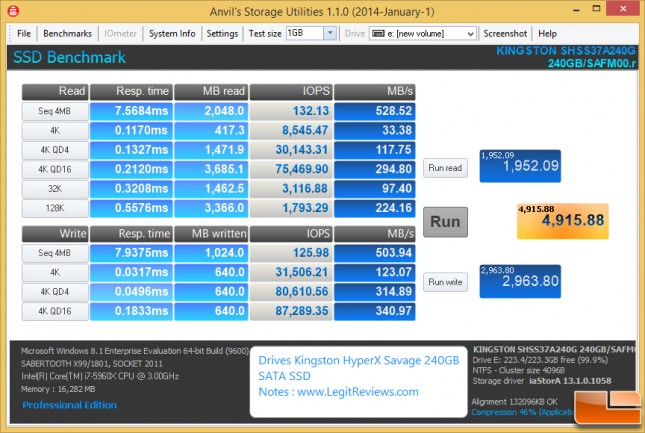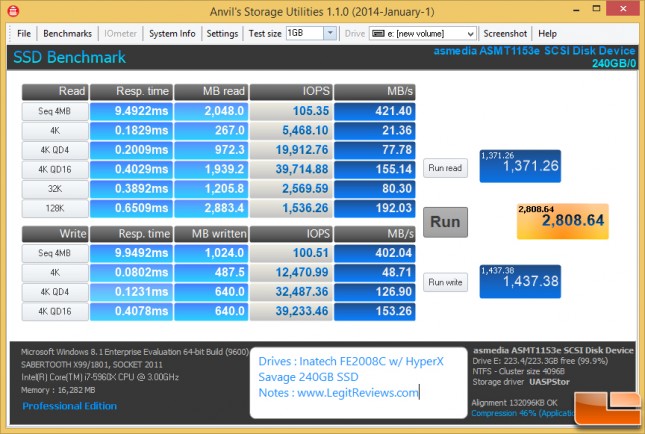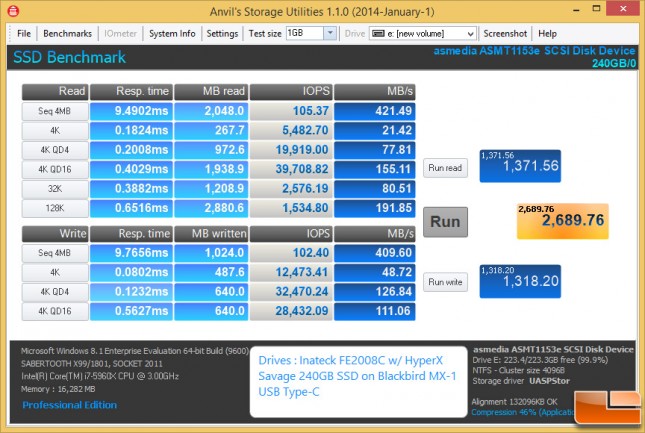Blackbird MX-1 USB 3.1 PCIe Card Review – USB 3.1 Type-A & Type-C ports
Anvil Storage Utilities
Anvil Storage Utilities 1.1.0
Along with the move to a new platform, we decided to make a change in one of the benchmarks. There’s a relatively new benchmark called Anvil Storage Utilities that is in beta but close to production. It’s a very powerful tool that measures performance through a variety of tests which can be customized. Since some of the tests more or less duplicate what we get from other benchmarks we use already, we decided to use the IOPS (Input/Output Operations Per Second) testing on 4kb file sizes at a queue depth of 4, 16, and 32. IOPS performance is something SSD makers tout quite a bit but we generally don’t do a lot of IOPS testing because frankly a lot of users can’t relate to IOPS metrics as well and it tends to be more meaningful to the enterprise/server crowd. Still, it is another performance indicator with relevance and while some drives post good MB/s numbers, their IOPS scores aren’t always commensurate which this test will prove out.
HyperX Savage 240GB SSD on SATA III:
HyperX Savage 240GB SSD w/ ASUS USB Type-C Card & Inateck FD2008C:
HyperX Savage 240GB SSD w/ Blackbird MX-1 Type-C Card & Inateck FD2008C:
Benchmark Results: The overall Anvil SSD Benchmark score was 4,915.88 with the Applications test setting of 46% compression with the HyperX Savage 250GB SSD running on the SATA III interface. The drive was able to get 529MB/s read and 504MB/s write with these settings. With the same exact SSD placed into the Inateck FD2008C 2.5-inch USB Type-C drive enclosure we hit 421MB/s read and 402MB/s write on the ASUS card and then 421MB/s read and 410MB/s write on the Blackbird MX-1. No big shocker here as we expect some variation between runs and none of the sequential read/write performance numbers are out of line.



